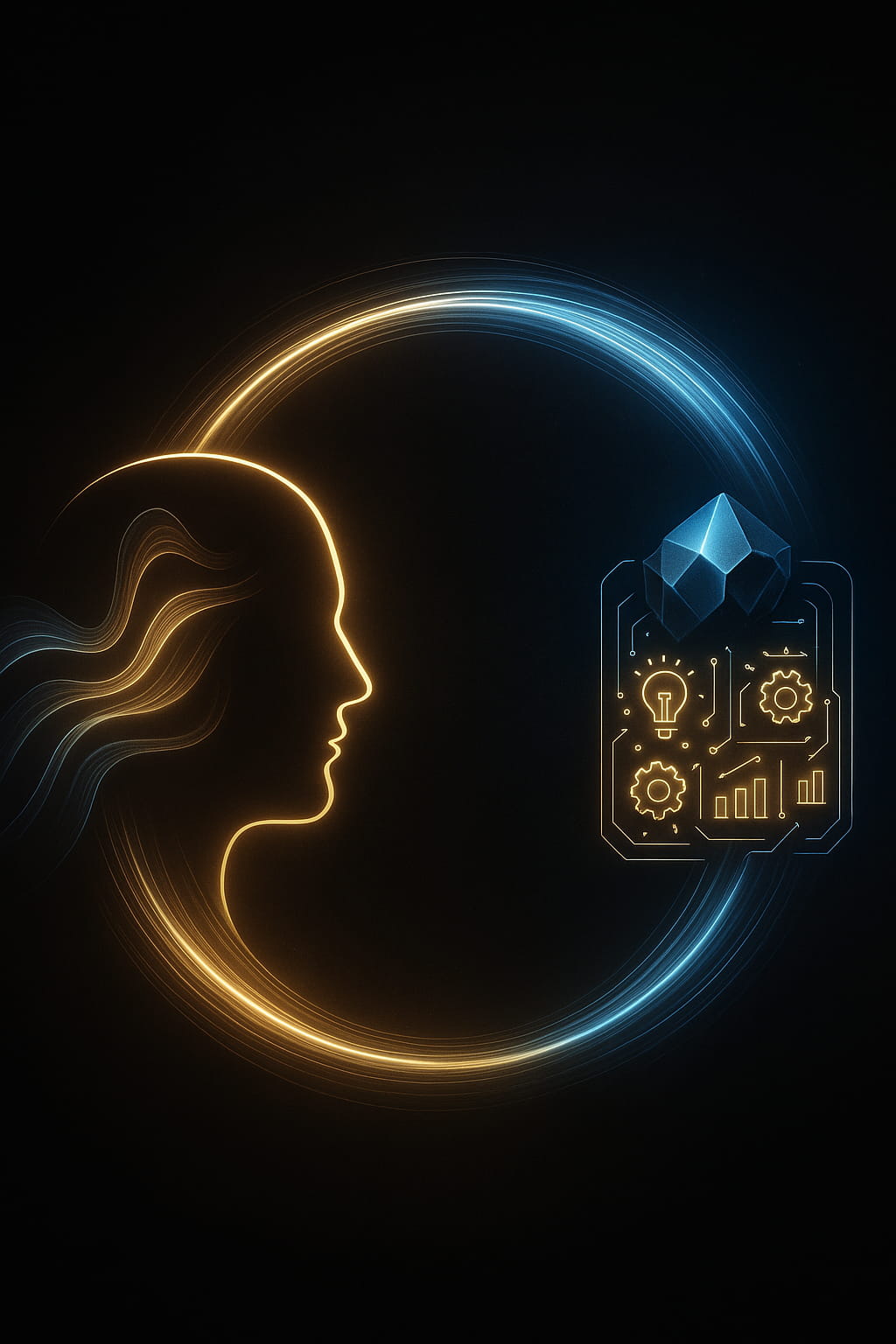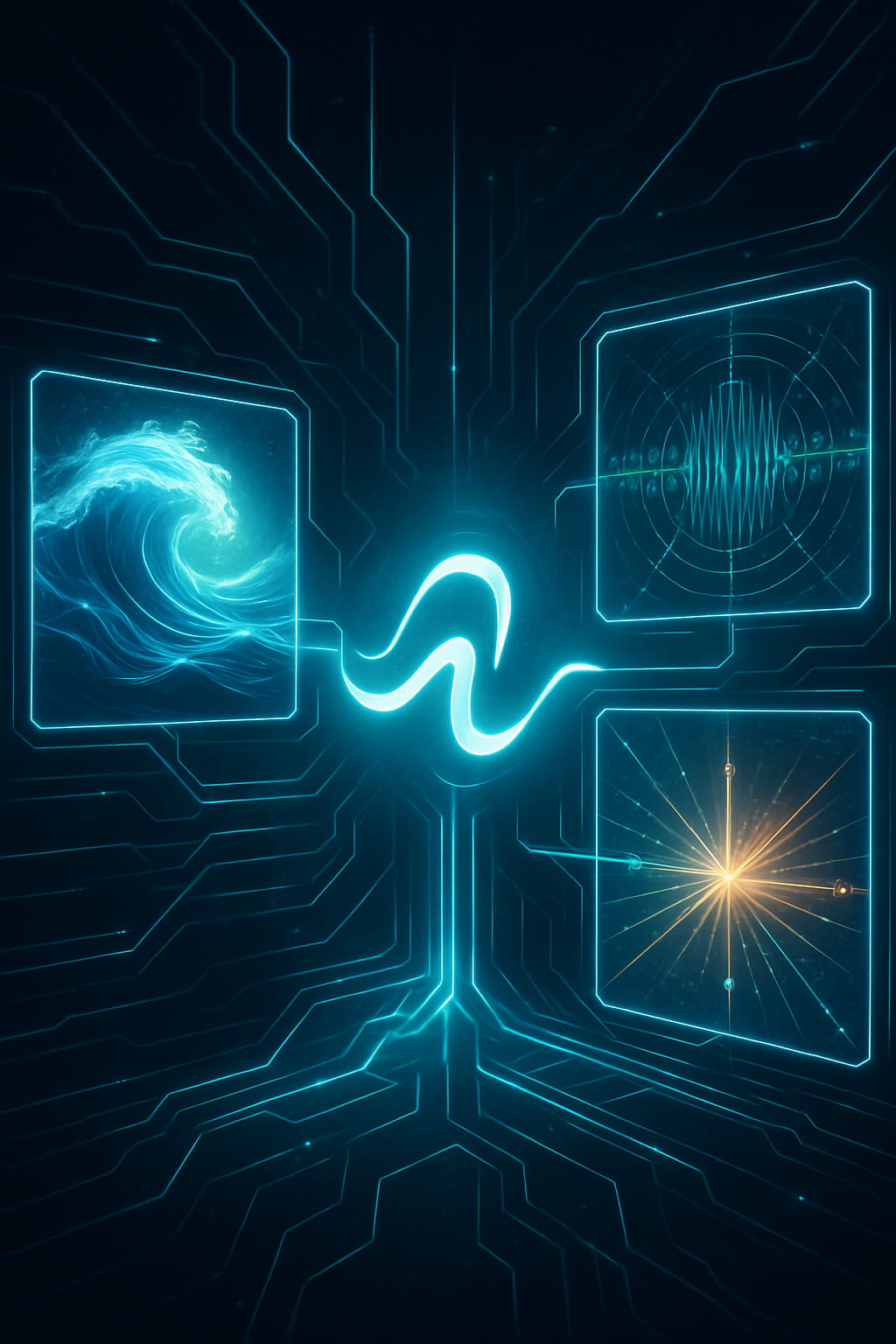Intuitive Symbolics for Enhanced Ideation
Abstract
Despite numerous advancements in digital creativity support, many ideation tools continue to depend heavily on language, which can inadvertently limit users’ capacity to generate genuinely novel ideas. Intuitive Symbolics proposes an alternative paradigm that harnesses abstract, evocative symbols—rather than words—to bypass linguistic constraints. Rooted in psychology, phenomenology, and HCI design principles, this framework facilitates pre-verbal, embodied thinking, enabling users to surface fresh insights. By uniting human intuition with an adaptive AI collaborator that interprets symbols by analyzing their deep connections within a knowledge graph of cross-cultural meaning, Intuitive Symbolics fosters a dynamic cycle of “intuitive exploration,” “gut-level selection,” and “collaborative refinement.” We argue that this approach expands the scope of creative ideation by actively engaging subconscious layers of cognition, encouraging divergent thinking, and supporting broad applicability across domains—including design, strategic problem-solving, and artistic innovation.
1. Introduction: Breaking the Language Barrier in Ideation
Language-based ideation methods—from brainstorming to digital note-taking apps—often rely on inputs that can constrain creativity. Even AI tools like large language models may keep users anchored to linear thought processes and conscious biases. However, subconscious or pre-verbal insights often fuel true creative breakthroughs, even if we struggle to articulate them (Gendlin, 2003). Intuitive Symbolics seeks to bridge this gap by channeling "gut-level" intuitions through abstract symbols. Drawing upon diverse theoretical traditions—such as Jungian archetypes (Jung, 1968), Merleau-Ponty’s emphasis on embodiment (1962), and psychodynamic techniques—we design an HCI environment where symbols, rather than words, serve as prompts for discovery. At the heart of the proposed system would be an advanced AI. It would be trained on a vast corpus of artworks, cultural symbols, and human experiences to synthesize a unique library of meaningful shapes. The system would then present the user with these evocative forms—from simple clouds suggesting fleeting thoughts to complex patterns evoking harmony or tension. By offering an adaptive system capable of interpreting these choices in real time, this approach would transform the user–computer relationship into an iterative, co-creative dialogue designed to surface truly novel ideas.

Universe 00110000
2. Related Work: Reimagining Creativity Support
Pre-Verbal Cognition and Symbolic Thinking
Research from psychology, phenomenology, and neuroscience underscores the role of pre-verbal or embodied cognition in spurring creative thoughts (Varela, Thompson, & Rosch, 1991). Jung’s theory of archetypes points to universal forms we recognize before language. Eugene Gendlin’s (2003) “felt sense” concept highlights a bodily knowing preceding articulation, while Merleau-Ponty’s (1962) phenomenology emphasizes that raw experience can be a potent source of insight. In HCI, visual aids like mood boards have shown promise (Bilda & Gero, 2007), but often remain loosely structured. Intuitive Symbolics systematically leverages these insights to create an ideation environment with purposeful AI assistance.
3. The Proposed Approach: A Cycle for Breakthrough Ideation
3.1 Intuitive Exploration: A Dialogue in Visual Metaphors
The process begins with the user browsing a unique library of abstract symbols. Crucially, these are not Rorschach-like blobs, nor are they concrete icons. They are a curated synthesis created by the AI itself, which has analyzed patterns from global art, mythology, and science to identify shapes that are rich with multiplicit meaning. A symbol might suggest a cloud and a fleeting thought, or an intricate pattern evoking harmony or tension. By presenting forms that resonate with our shared human experience, the system invites the user to follow their "felt sense," selecting symbols that "feel right" for the problem at hand. This pre-verbal stage sidesteps the fear of using the "wrong word" and opens a direct channel to subconscious ideation.
3.2 Gut-Level Selection: Capturing Nascent Ideas Symbolically
When a symbol resonates, the user selects it without lengthy deliberation. This act externalizes what might otherwise remain an inchoate hunch or half-formed vision. This choice is not a final declaration but a springboard, giving tangible form to a raw intuition. This is valuable for breakthrough thinking, where “wild” new possibilities often emerge from less conscious processes (Sawyer, 2012).
3.3 Machine Interpretation: Unlocking Symbolic Meaning
Once a symbol or a sequence of symbols is chosen, the AI acts as an interpretive partner, not just a static tool. It analyzes the user's choice against its vast, pre-analyzed knowledge graph of symbolic associations. Instead of providing a single definition, it sparks new associations by revealing the deep patterns of meaning embedded within the symbol.
This interpretive power stems from the AI's ability to create a deep semantic map between visual forms and a network of human concepts, a principle explored further in a related paradigm, Synesthetic. Just as that approach decodes the relationship between color and words, Intuitive Symbolics decodes the meaning embedded in archetypal forms.
For example, imagine a user brainstorming a new project selects a symbol resembling a wave. The AI, recognizing this form's universal significance, could propose several conceptual avenues:
- This form is associated with oceanic rhythms. Does the concept of cycles or ebb and flow apply to your project?
- It also relates to sound vibrations. Should we explore themes of resonance or frequency?
- In physics, this shape represents energy transfer. Is momentum or wave propagation a useful metaphor?
By presenting these simultaneous interpretations, the system encourages divergent thinking and helps the user articulate their nascent idea. The user can then endorse or discard suggestions, refining the conceptual trajectory in a dynamic, collaborative loop. This process transforms a vague intuition into a set of powerful, actionable themes.

Universe 00110000
4. Potential Benefits and Use Cases
The Intuitive Symbolics paradigm offers several key advantages for creative work, centered on its ability to access pre-verbal and subconscious thought processes.
Key Benefits of the Approach
- Enhanced Creative Ideation: By bypassing linguistic filtering, individuals and teams can surface novel ideas with fewer inhibitions, leading to a greater volume and originality of concepts during the earliest ideation stages.
- Overcoming Creative Blocks: The symbol-based exploration provides alternative entry points to a problem space, helping users overcome entrenched patterns of thinking when they feel creatively "stuck."
- Divergent Thinking and Novel Perspectives: The rich, multiplicit meaning of each AI-synthesized symbol broadens a user's conceptual palette, encouraging them to entertain viewpoints they might not have reached via linear brainstorming (Osborn, 1953).
- A True Collaborative Partner: The system frames the AI as a co-creative agent, not merely a tool. It aids ideation by suggesting tangential or provocative themes, actively participating in the discovery process based on user feedback.
Specific Use Cases
This approach is applicable across numerous domains that rely on deep creative insight, including:
- Design Thinking and Product Innovation: Early-stage prototyping and explorations of "latent" user needs.
- Creative Writing and Storytelling: Character development, plot discovery, and thematically rich narratives.
- Strategic Problem-Solving: Diversifying solution spaces for complex organizational challenges.
- Scientific Discovery and Hypothesis Generation: Prompting new ways of viewing data or forming novel hypotheses.
- Artistic Exploration and Conceptual Development: Stimulating artistic direction and conceptual leaps in visual or performing arts.
5. Conclusion
Intuitive Symbolics represents a leap in how HCI can augment creativity by prioritizing pre-verbal intuition. Drawing upon depth psychology, phenomenology, and user-centered design, this paradigm shifts focus away from linear text-based workflows toward gut-level symbolic expression, facilitated by an AI co-creator. By embracing the rich, layered meaning of symbolic cognition, Intuitive Symbolics challenges the assumption that language must be the default medium of ideation. It opens opportunities to unlock hidden creative reservoirs, foster deeper emotional resonance, and encourage more holistic human–machine collaborations. As we refine this paradigm, it has the potential to become a cornerstone of next-generation creativity support, catalyzing breakthrough thinking across industries, artistic endeavors, and scientific frontiers.
References
- Bilda, Z., & Gero, J. S. (2007). The impact of working memory limitations on the conceptual design process. Design Studies, 28(4), 343–367.
- Gendlin, E. T. (2003). Focusing: How to Gain Direct Access to Your Body's Knowledge. Rider.
- Jung, C. G. (1968). The Archetypes and the Collective Unconscious (Collected Works, Vol. 9, Part 1, 2nd ed.). Princeton University Press.
- Lubart, T. I. (2001). Models of the Creative Process: Past, Present and Future. Creativity Research Journal, 13(3–4), 295–308.
- Merleau-Ponty, M. (1962). Phenomenology of Perception (C. Smith, Trans.). Routledge & Kegan Paul.
- Osborn, A. F. (1953). Applied Imagination: Principles and Procedures of Creative Problem-Solving. Charles Scribner’s Sons.
- Sawyer, R. K. (2012). Explaining Creativity: The Science of Human Innovation (2nd ed.). Oxford University Press.
- Varela, F. J., Thompson, E., & Rosch, E. (1991). The Embodied Mind: Cognitive Science and Human Experience. MIT Press.

